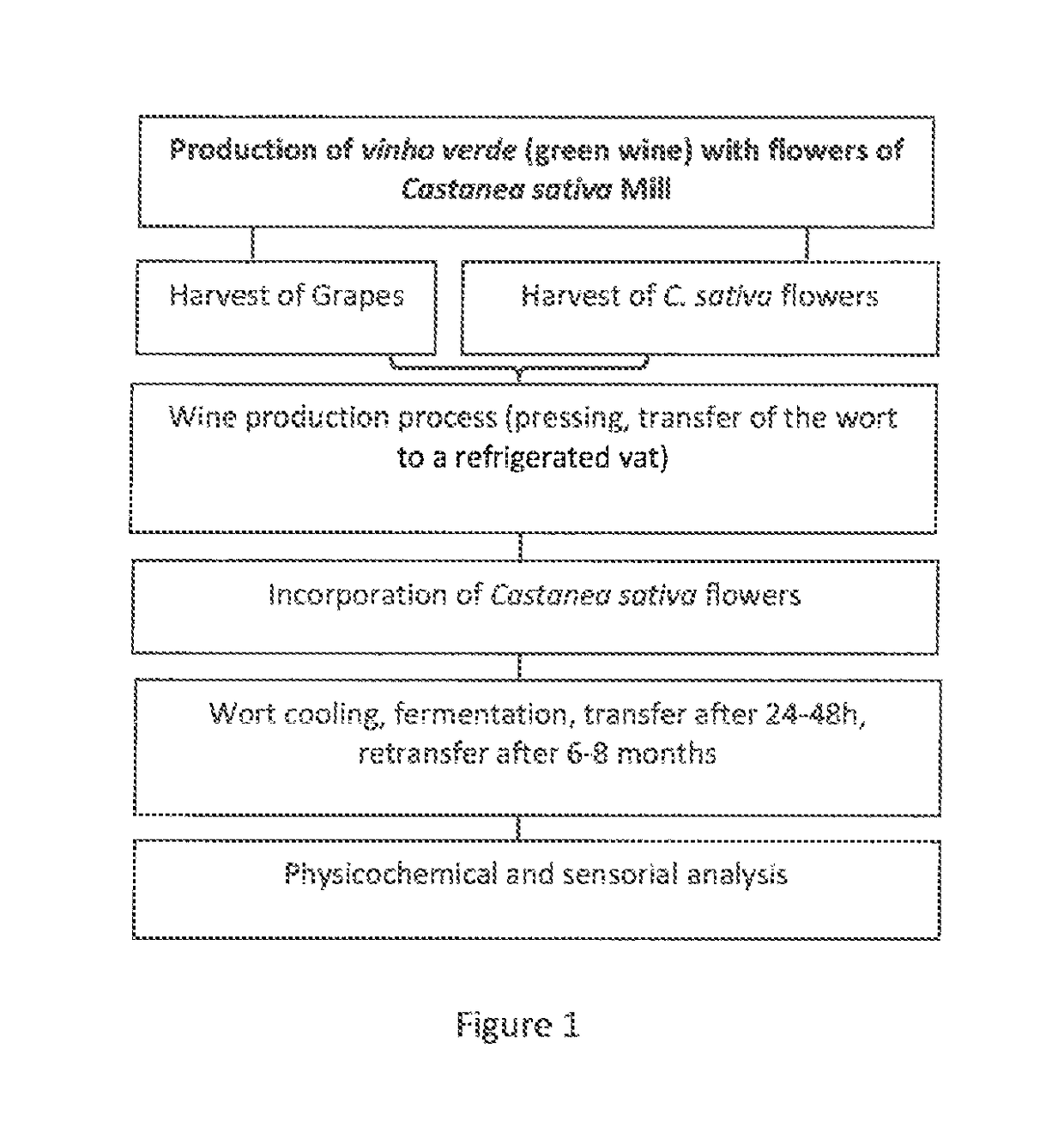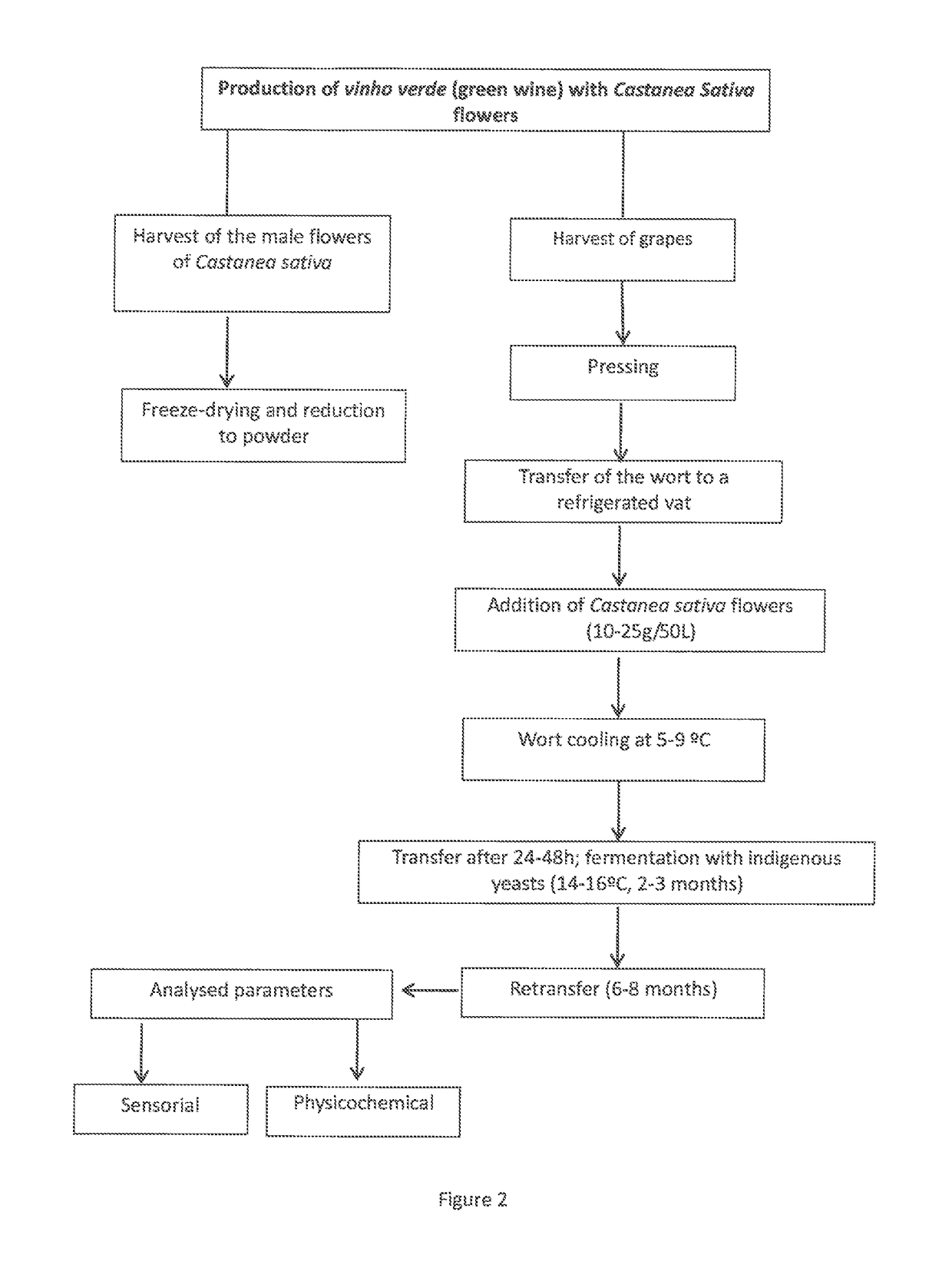Process for the production of wine using flowers of castanea sativa mill as natural preservatives in alternative to the addition of sulphites
a technology of natural preservatives and castanea sativa, which is applied in the field of production of wine without added sulphites, can solve the problems of increasing restrictions on the use of chemical additives (antioxidants or antimicrobials) in food, significant additional costs for several industries, and inability to bear significant additional costs. achieve the effect of high-quality products
- Summary
- Abstract
- Description
- Claims
- Application Information
AI Technical Summary
Benefits of technology
Problems solved by technology
Method used
Image
Examples
example
[0039]For the production of vinho verde (green wine) incorporated with flowers of Castanea sativa Mill, male flowers are harvested manually in the field, after the fertilization process, without prejudice in the formation of the fruit; the flowers are then lyophilized and incorporated into the green wine, during the production process. Vinho verde is produced by the producer Fernando Magalhães Pinto Paiva in the city of Amarante. For the production process, the grapes are collected and pressed; the wort is transferred to a vat to which the C. sativa flowers are added in an amount selected according to the known bioactivity values (antioxidant and antimicrobial) already studied in order to confer preservative effects to the wine. After this process, the wort is cooled and transferred to another vat after 24 to 48 hours. Fermentation begins at controlled temperature with indigenous yeasts.
[0040]The wine is allowed to stand for 2-3 months after which it is re-transferred into another v...
PUM
 Login to View More
Login to View More Abstract
Description
Claims
Application Information
 Login to View More
Login to View More - R&D
- Intellectual Property
- Life Sciences
- Materials
- Tech Scout
- Unparalleled Data Quality
- Higher Quality Content
- 60% Fewer Hallucinations
Browse by: Latest US Patents, China's latest patents, Technical Efficacy Thesaurus, Application Domain, Technology Topic, Popular Technical Reports.
© 2025 PatSnap. All rights reserved.Legal|Privacy policy|Modern Slavery Act Transparency Statement|Sitemap|About US| Contact US: help@patsnap.com


